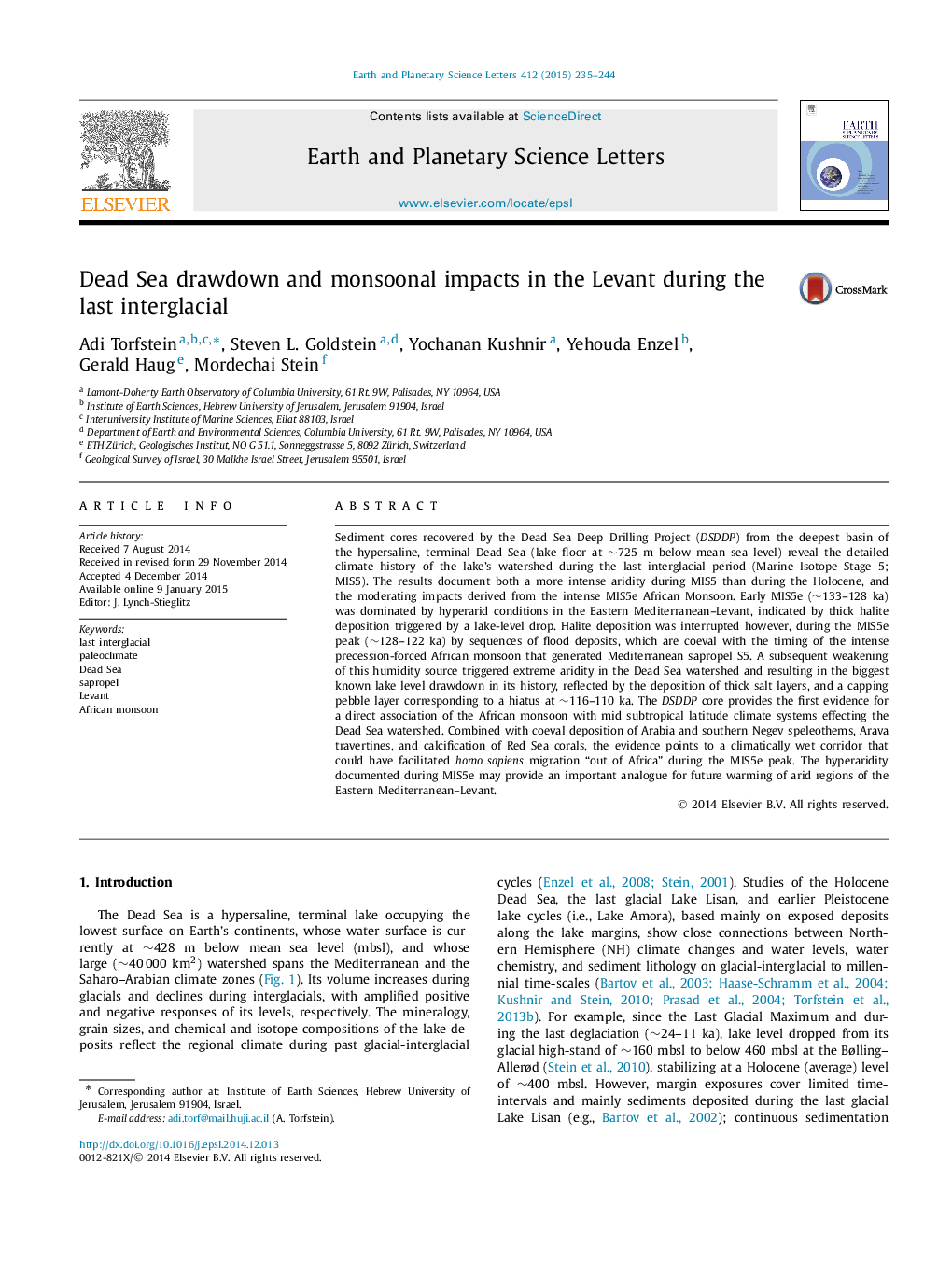| کد مقاله | کد نشریه | سال انتشار | مقاله انگلیسی | نسخه تمام متن |
|---|---|---|---|---|
| 6428662 | 1634744 | 2015 | 10 صفحه PDF | دانلود رایگان |
- High-resolution structure of MIS5e is revealed by deep-drilling in the bottom of the Dead Sea.
- Two severe arid spells at the start and end of MIS5e (â¼133-128 and 122-116 ka) bracket a relatively wet episode in the Dead Sea at the peak of MIS5e.
- The wet interval during MIS5e is coeval with the precession-driven African monsoon that caused the Mediterranean S5 sapropel.
- Periods of wetness and extreme aridity are suggested as important controls over hominin dispersal along the rift valley.
- The climate dynamics during MIS5e provide an analogue for future climate conditions in the Levant in a warming world.
Sediment cores recovered by the Dead Sea Deep Drilling Project (DSDDP) from the deepest basin of the hypersaline, terminal Dead Sea (lake floor at â¼725 m below mean sea level) reveal the detailed climate history of the lake's watershed during the last interglacial period (Marine Isotope Stage 5; MIS5). The results document both a more intense aridity during MIS5 than during the Holocene, and the moderating impacts derived from the intense MIS5e African Monsoon. Early MIS5e (â¼133-128 ka) was dominated by hyperarid conditions in the Eastern Mediterranean-Levant, indicated by thick halite deposition triggered by a lake-level drop. Halite deposition was interrupted however, during the MIS5e peak (â¼128-122 ka) by sequences of flood deposits, which are coeval with the timing of the intense precession-forced African monsoon that generated Mediterranean sapropel S5. A subsequent weakening of this humidity source triggered extreme aridity in the Dead Sea watershed and resulting in the biggest known lake level drawdown in its history, reflected by the deposition of thick salt layers, and a capping pebble layer corresponding to a hiatus at â¼116-110 ka. The DSDDP core provides the first evidence for a direct association of the African monsoon with mid subtropical latitude climate systems effecting the Dead Sea watershed. Combined with coeval deposition of Arabia and southern Negev speleothems, Arava travertines, and calcification of Red Sea corals, the evidence points to a climatically wet corridor that could have facilitated homo sapiens migration “out of Africa” during the MIS5e peak. The hyperaridity documented during MIS5e may provide an important analogue for future warming of arid regions of the Eastern Mediterranean-Levant.
Journal: Earth and Planetary Science Letters - Volume 412, 15 February 2015, Pages 235-244
